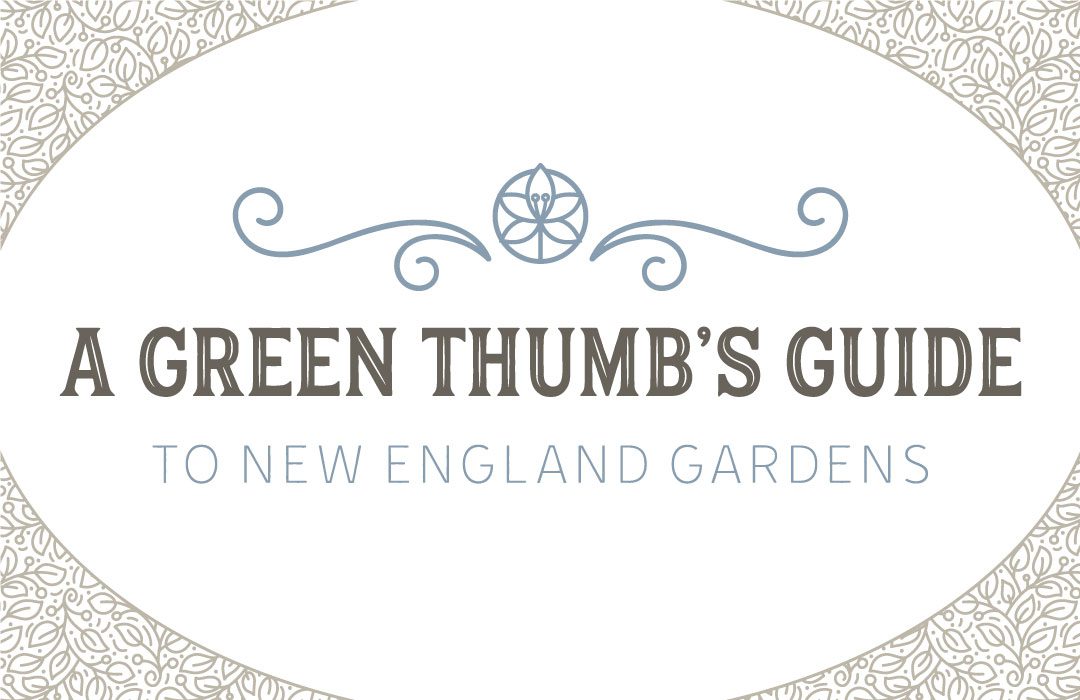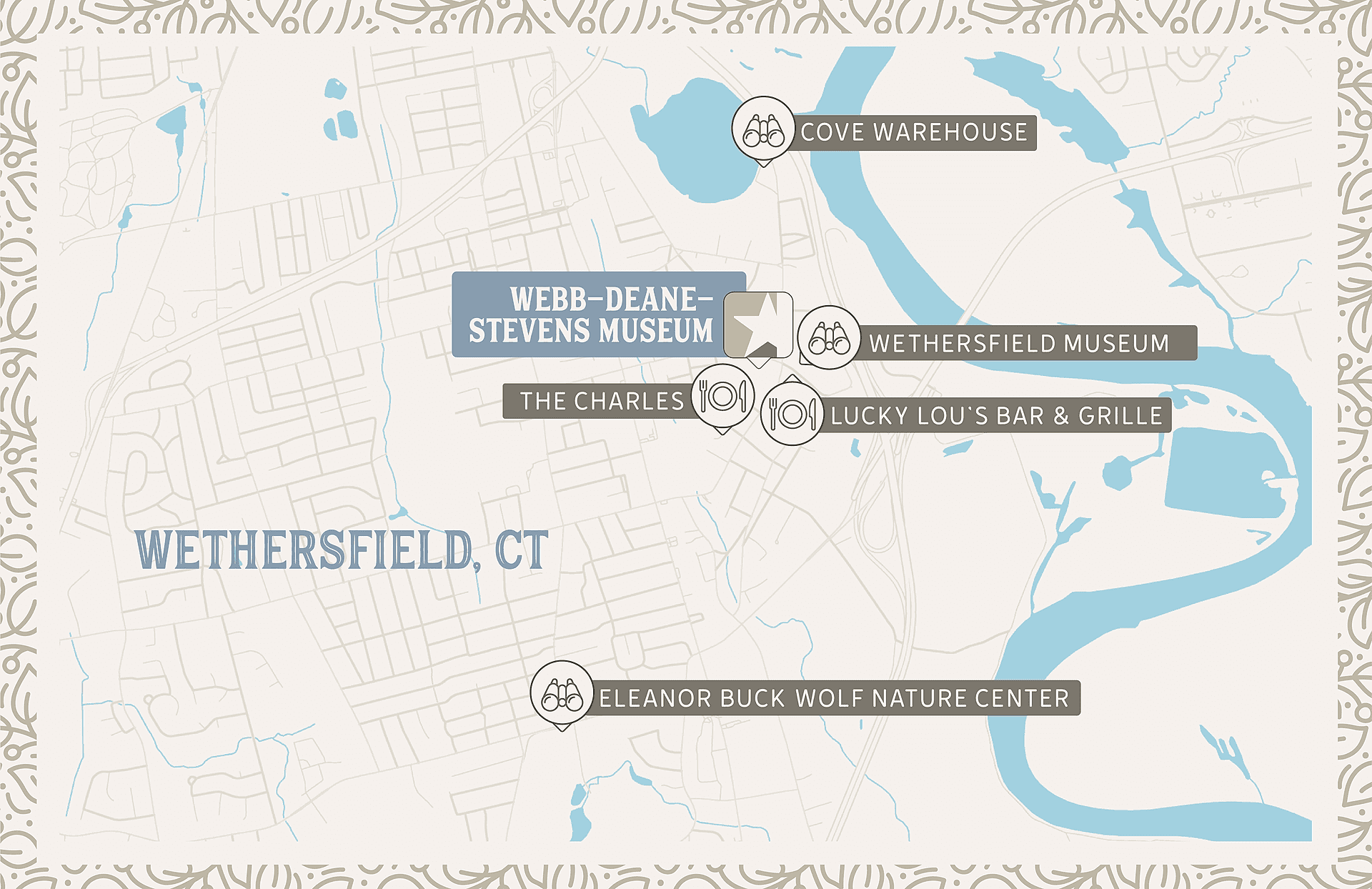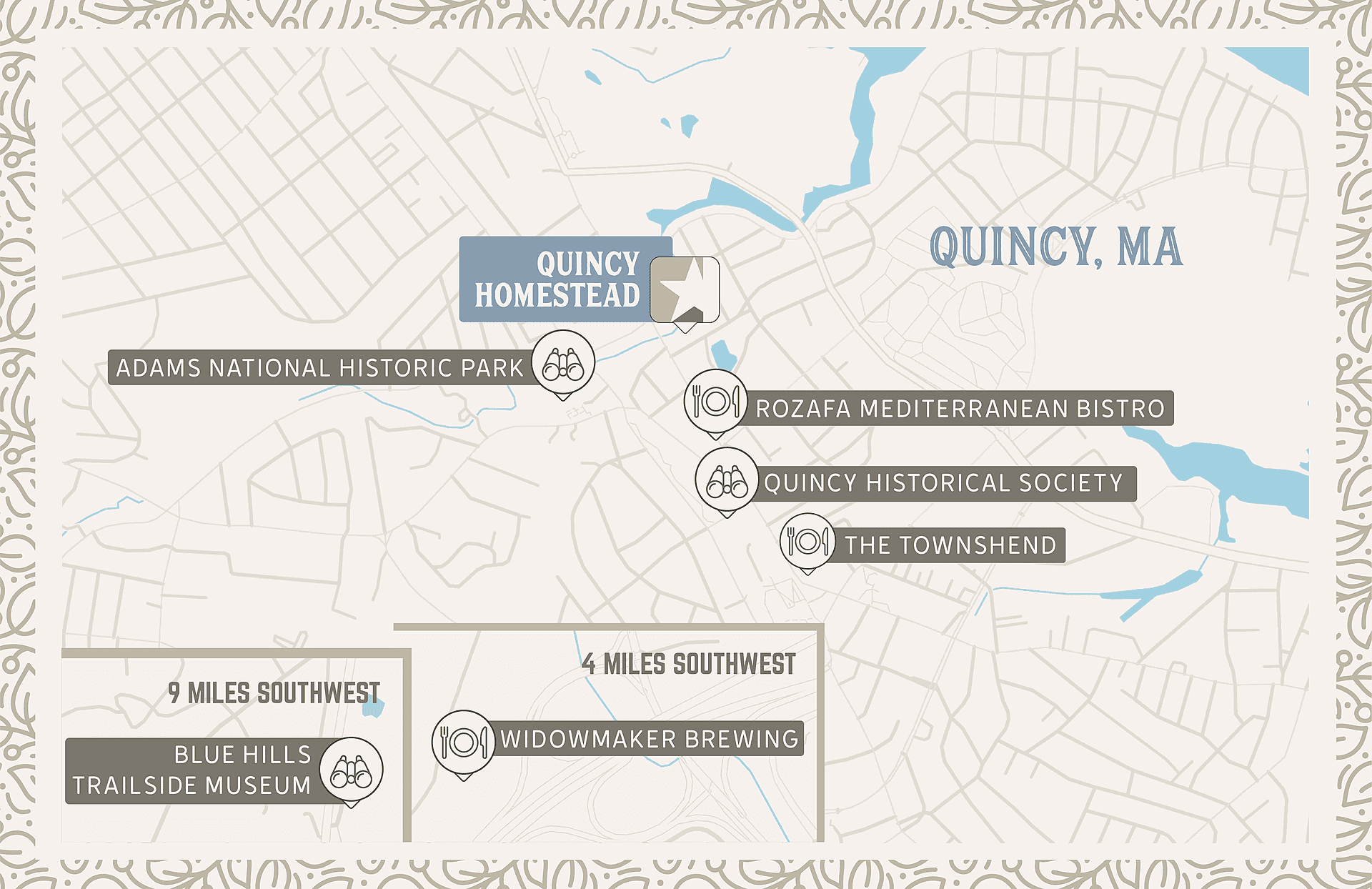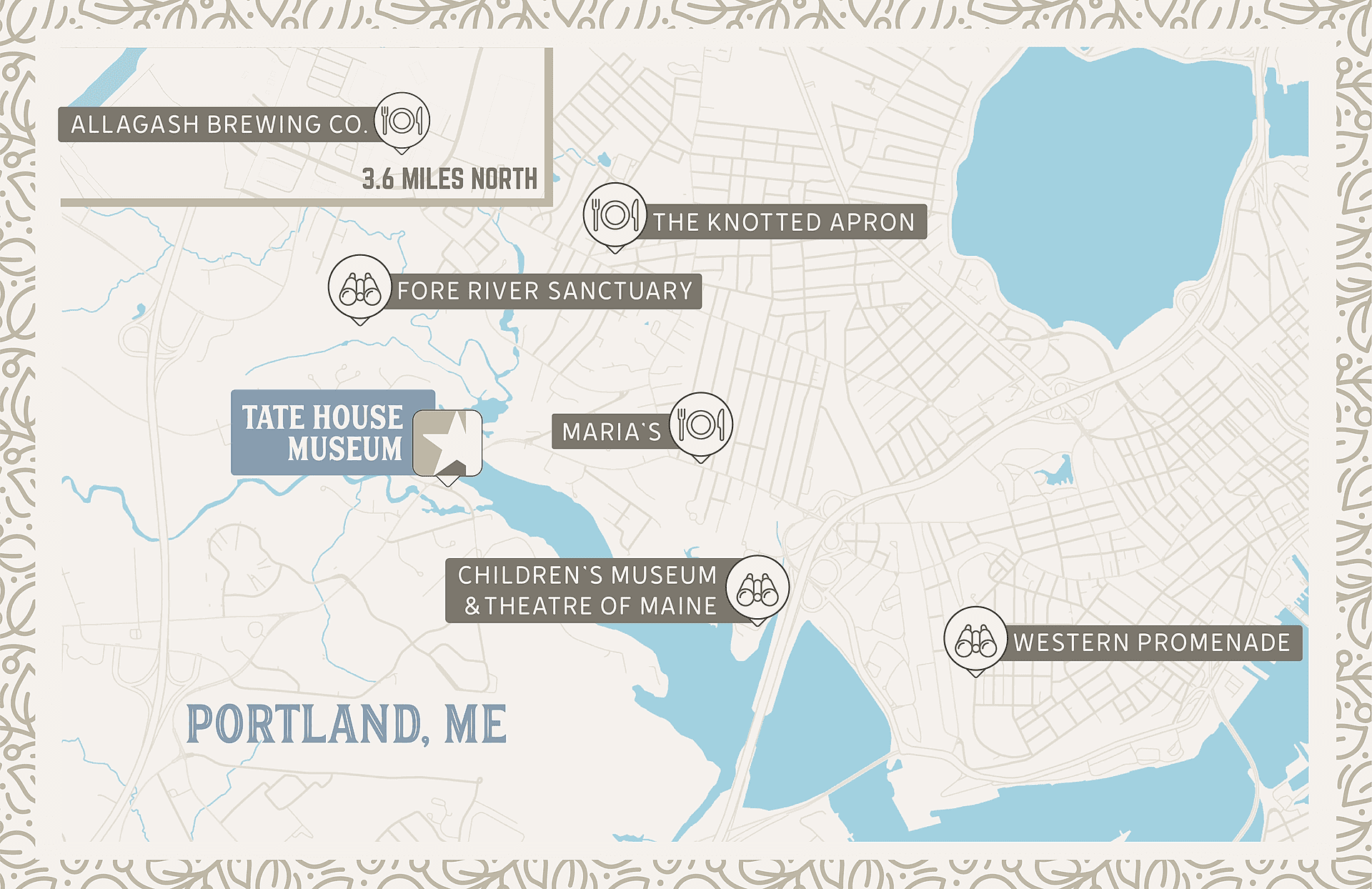The New England growing season may be shorter, but that doesn’t stop these destinations from cultivating some of the most beautiful gardens in the Northeast!

A Garden Lover’s New England Adventure
In this portion of our Green-Thumb’s Guide to Legendary Gardens, we’ll help you stop and smell the flowers in Connecticut, Massachusetts, and Maine. So get your camera and plant identification guide ready – let’s explore some of the best Colonial gardens in New England!
In this guide, we’ll cover:
Webb-Deane-Stevens Museum
Wethersfield, Connecticut
While the Webb-Deane-Stevens Museum is typically equated with its rich Revolutionary wartime history – hosting the likes of George Washington – a few steps into the property’s garden can shift a visitor’s mindset toward more peaceful topics.
Located in the center of Connecticut’s largest historic district, the Webb-Deane-Stevens Museum features three houses, a barn, three restored privies, and the Colonial Revival garden. It’s one of fifteen distinctive historic sites and gardens in the state of Connecticut!
This particular Colonial Revival garden was not a restoration project but an installation led by the Connecticut Society of The National Society of The Colonial Dames of America with the help of landscape architect, Amy Cogswell. Amy was hired in 1921 to begin planning a Colonial Revival garden with classic elements like quaint arbors and flowers. The original plan included 99 varieties of plants.
Over time, the garden was altered based on the cultural and economic landscape of the United States. But in 1999, the Colonial Dames once again restored the Colonial Revival garden based on Cogswell’s original plan. Today visitors can expect to see the same variety of flowers and decorative elements one would have enjoyed in the 1920s. It’s now maintained by volunteer “Garden Angels“.
View this post on Instagram
In the Garden:
- Herb garden
- Irises
- Peonies
- Trellis roses
- Hollyhocks
- Daisies
- Lillies
- Sedum
- Chrysanthemum
Other Exhibits:

Things to Do Nearby:
- Eleanor Buck Wolf Nature Center – Kid-Friendly
- Cove Warehouse
- Weathersfield Museum
Places to Eat:
- The Charles
- Lucky Lou’s Bar & Grille – Dog-Friendly
Quincy Homestead
Quincy, Massachusetts
Established in 1680, the Quincy Homestead is listed on the National Register of Historic Places and was purchased by The National Society of The Colonial Dames of America in the Commonwealth of Massachusetts (NSCDA-MA) in 1904. Today, the Massachusetts Department of Conservation and Recreation owns and manages the property in partnership with the NSCDA-MA.
Visitors to the Dorothy Quincy Homestead get the unique opportunity to appreciate four architectural periods – thanks to five generations and 200 years of enlarging and enhancing the property. In addition to the remarkable Georgian Architecture is a two-acre plot with a beautifully landscaped heritage garden with a Colonial-era parterre design and herb garden.
The Quincy family were enthusiastic horticulturists, as shown by their vast farm and gardens. These were considered a top New England showpiece in the 18th Century. Edmund Quincy IV was the author of a “Treatise on Hemp Husbandry,” published in 1765, and a 1760 diary entry by John Adams tells the story of taking tea and discussing agriculture with Benjamin Franklin and Edmund Quincy IV at the homestead.
In 2019, the Wollaston Garden Club worked with the Quincy Homestead to complete the garden restoration of its historic boxwoods with funding from the Garden Club Federation of Massachusetts and the Quincy Preservation Committee. The public can tour the heritage garden from sunrise to sunset each day of the year. Dogs are welcome on a leash!
View this post on Instagram
In the Garden:
- Joe-Pye weed
- Boxwoods
- Queen Anne’s lace
- Black-eyed susans
Other Exhibits:
- Homestead Tour

Things to Do Nearby:
Places to Eat:
- Rozafa Mediterranean Bistro
- The Townshend
- Widowmaker Brewing – Dog-friendly
Moffatt-Ladd House & Gardens
Portsmouth, New Hampshire
The legend has it that the then-owner of the Moffatt-Ladd House, William Whipple, planted a horse chestnut tree in the front yard in celebration of his signing of the Declaration of Independence in 1776. But that isn’t the only notable flora featured on the property!
This beautiful 18th-century Georgian-style home is located in the heart of Portsmouth, just steps away from the old harbor. The grounds of the home are ornately decorated with a wide variety of flowering and leafy plants. This is thanks to one of the later owners of the home, Alexander H. Ladd, who had an affinity for tulips and other bulbed flowers.
A house with many owners often results in a wider variety of beautiful plants to admire. Today’s Colonial Revival garden is managed by the New Hampshire Society of the NSCDA, along with the museum inside. The garden still features some of Ladd’s original landscape designs, along with the almost 250-year-old chestnut tree, and a 254-year-old English damask rose, planted by Sarah Catherine Mason Moffatt.
The gorgeous garden is available to be rented for weddings and other similar events.
View this post on Instagram
In the Garden:
- 246-year-old horse chestnut tree
- 254-year-old English damask rose
- Archways & sculptures
- Irises
- Tulips
- Peonies
- Black-eyed susans
- Aster
- Lillies
Other Attractions:
Things to Do Nearby:
Places to Eat:
Tate House Museum
Portland, Maine
Botany enthusiasts can travel further north to visit the Tate House Museum, one of the only pre-Revolutionary War structures open to the public in Portland. This home, constructed in 1755 for George Tate, provides a first-hand look at life for colonists. Sited on a knoll, the grounds were once famous for the white pines Tate harvested for British ship companies. Tate House Museum stands as a physical reminder of the economic importance of the early ship mast trade and its role in our history as a source of income and supplies for the American Revolution.
Visitors can book a tour of the Tate House Museum Gardens and Grounds, guided by a well-versed Garden Docent to learn more about the reasons for the garden’s contents, and their practical applications for cooking, medicine, and aromatics in this region of the colonies. Did we mention that they have plant sales as fundraisers?!
The Tate House is one of only 2,500 historic places in the country that is a National Historic Landmark.
In the Garden:
- Chrysanthemums
- Herb garden
- Queen Anne’s lace
- Fox gloves
Other Attractions:

Things to Do Nearby:
Places to Eat:
Continue Your Green-Thumb Journey
Gardens are such a wonderful way to connect to the ways people of the past spent their free time. One can imagine strolling alongside the boxwoods with Dorothy Quincy or watching the tall white pines sway in the breeze around the Tate House.
If you can’t get enough of our Colonial gardens, don’t worry. There’s more to see! Check out our GreenThumb’s Guide to Legendary Gardens in the Mid-Atlantic and Out West!